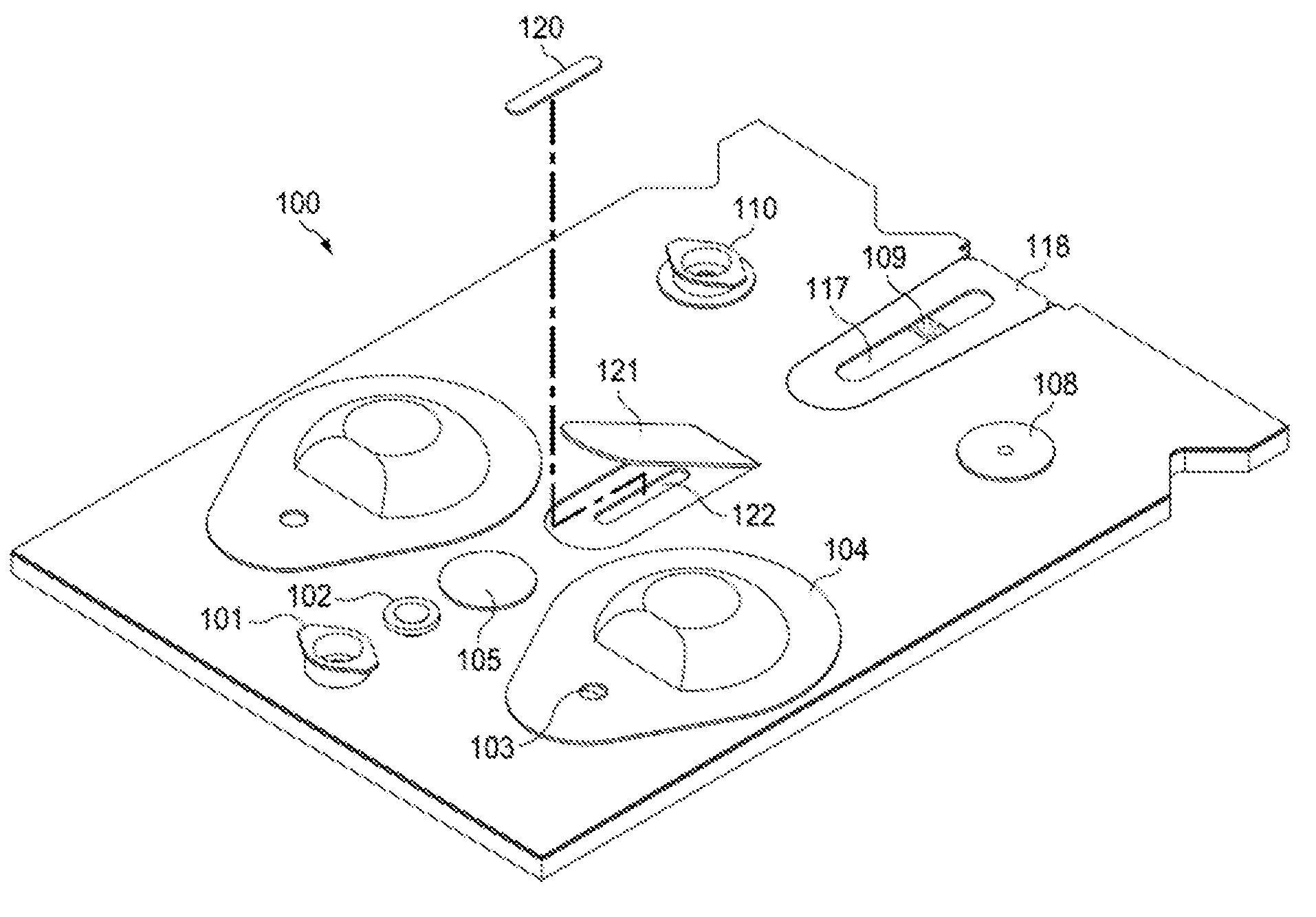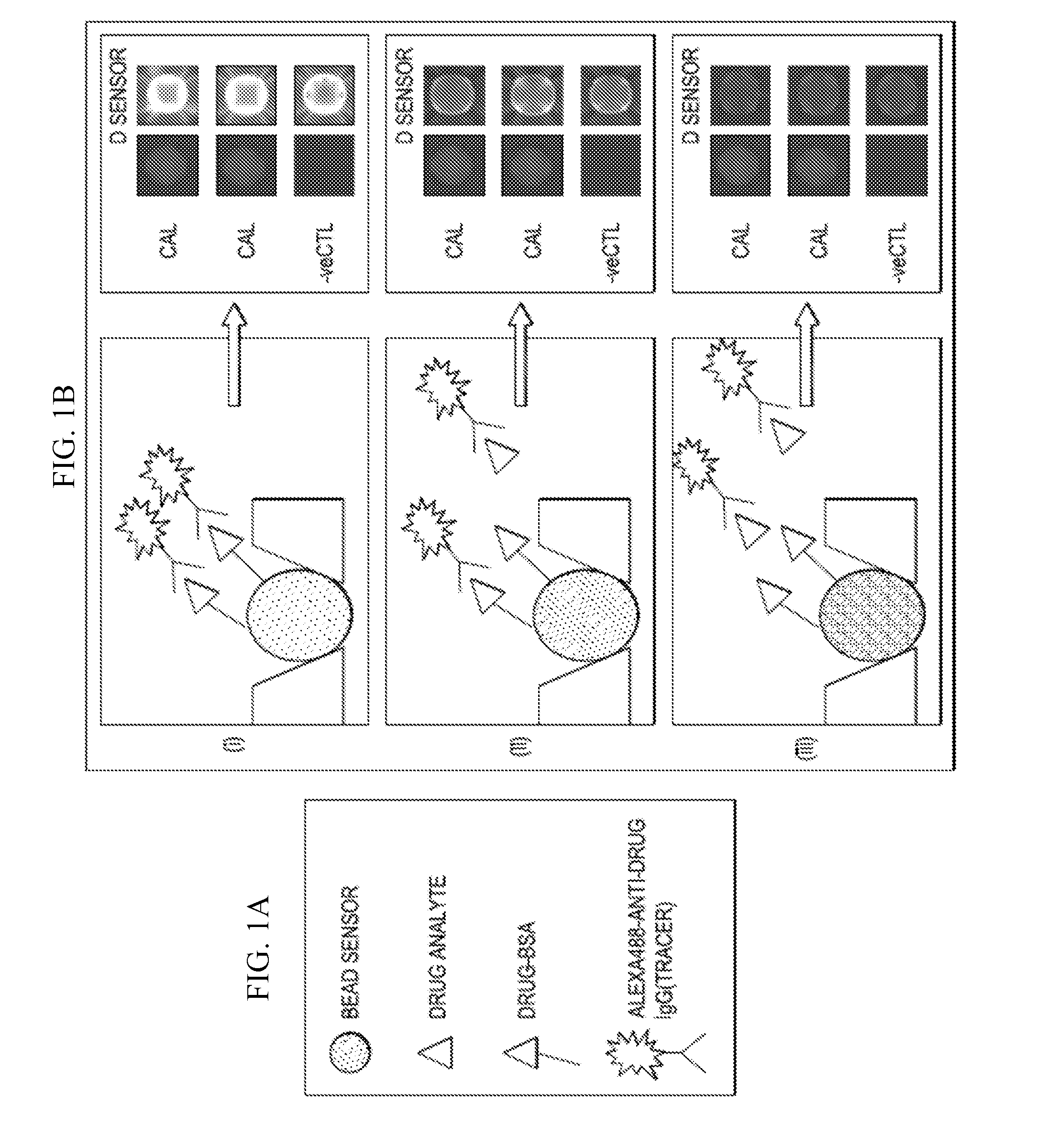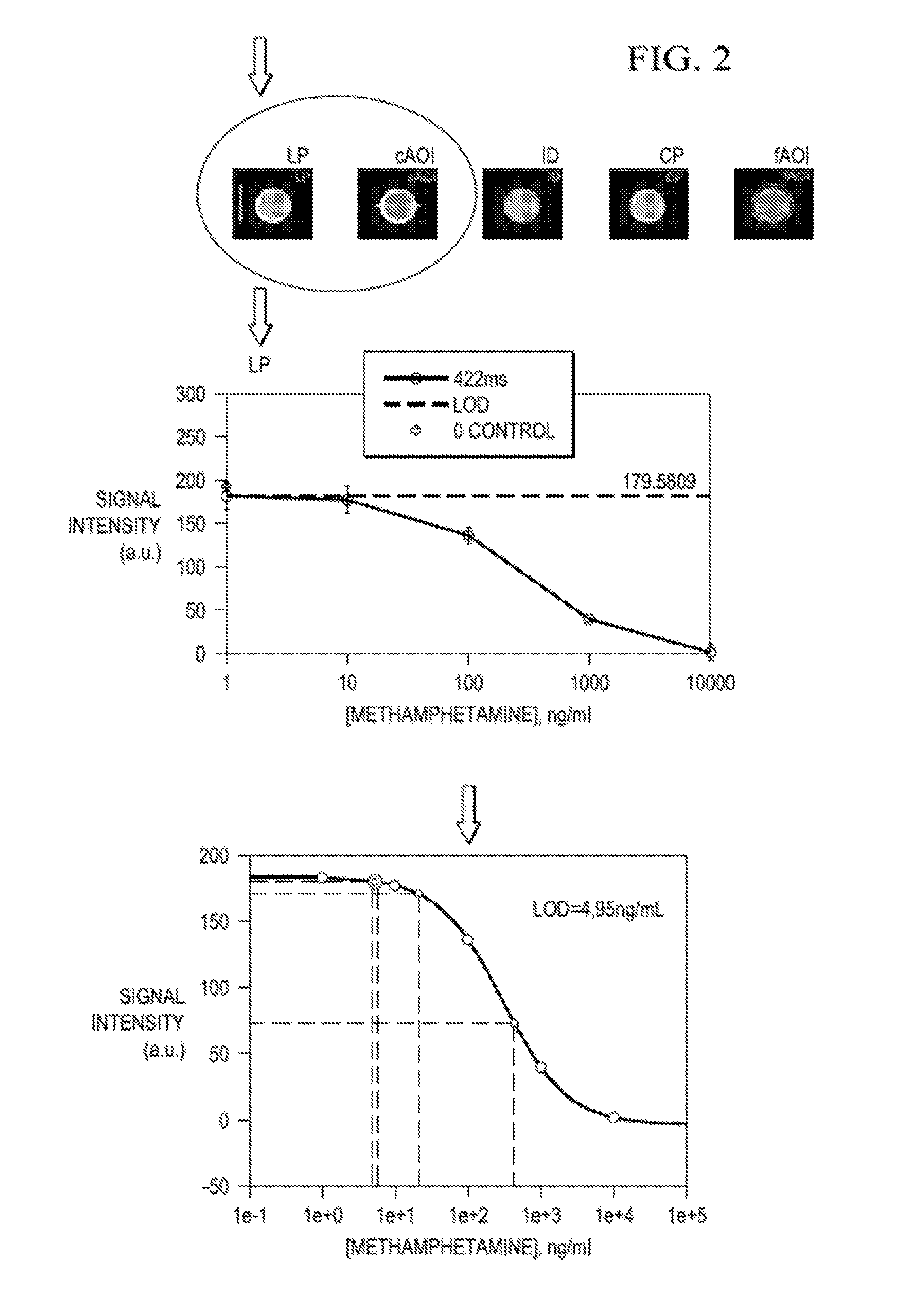Bio-nano-chips for on-site drug screening
a bio-nano-chip and drug screening technology, applied in the field of microfluidic devices, systems, methods and kits for drug testing, can solve the problems of limited current testing of biological samples for drugs of abuse, complicated lab instruments, and difficult sample preparation, and achieve the effect of reducing the signal
- Summary
- Abstract
- Description
- Claims
- Application Information
AI Technical Summary
Benefits of technology
Problems solved by technology
Method used
Image
Examples
example 2
Expansion of Tests
[0070]The proof of concept results were excellent, so the test was expanded so that additional common street drugs could be detected. The reagents chosen after extensive testing for these second generation tests are shown in Table 4. These reagents were tested in a 500 μl bead, multi-assay format and shown to have a dynamic range spanning four to five orders of magnitude with LODs in the ng / ml range, and in many cases less than 1 ng / ml.
TABLE 4ReagentsOptimal BeadAssaySensorCatalog #TracerCatalog#THC -BSA-THCAGTHC-0304THC-SPECIFIC sheepBVX.THC.2B9format A(ARISTA)mAb (Randox / Bioventix)THC -THC-SPECIFICBVX.THC.2B9BSA-THCAGTHC-0304format Bsheep mAb(ARISTA)(Randox / Bioventix)OxazepamBSA-TEMAZEPAMIMM9552BZO-SPECIFIC mouseABBZO-0400(Randox)mAb (ARISTA)NordiazepamBSA-TEMAZEPAMIMM9552BZO-SPECIFIC mouseABBZO-0400(Randox)mAb (ARISTA)TemazepamBSA-TEMAZEPAMIMM9552BZO-SPECIFIC mouseABBZO-0400(Randox)mAb (ARISTA)MDMABSA-METHIMM9555METH-SPECIFIC sheepPAS10037(Randox)mAb (Randox)MDA...
example 3
THC Optimization
[0072]Difficulty in optimizing the THC assay was encountered. In the original reverse competitive immunoformat (immunoformat A or “IFA”) the bead-based competitive type of immunoassay was executed as follows: The tracer anti-THC antibody was mixed with the sample and the mixture delivered over a period of 7.5 minutes to the array of beads in the LOC flow cell. The array hosted beads coated with BSA-drug conjugate (i.e. THC-BSA-bead sensors), as well as negative controls beads coated with BSA alone, along with calibrator beads used as internal controls. A reduction in signal indicated that drug in the sample was competing away signal from the drug-bound beads.
[0073]However, numerous attempts to further optimize this IFA assay produced minimal improvements in its LOD. As the LOD of the assay is dependent on the intra-assay (or bead to bead) variation for the zero drug (control) condition, the team took a close look at the images of the bead array and discovered the sig...
example 4
Stabilization of Beads
[0081]A field environment is likely to be quite different from a lab environment with trained technicians, complex machinery, and optimal working conditions. As one example, in the field, it is likely that the beads may be opened to air, and not used for some time. Therefore, methods of stabilizing the 500 μl beads against drying out were undertaken and glycerol was tested as a preservative or anti-drying agent.
[0082]Initial experiments indicated that treatment with 30% glycerol (in PBS) served as an effective method to maintain the moisture around the beads, while likewise maintaining the structural capacity of the beads. The next objective was to determine its effects on their functional capacity as immune sensors on the BNC platform.
[0083]Briefly, agarose beads coupled to BSA-THC conjugate were distributed in 5 eppendorf tubes and suspended in 1%, 2%, 10% and 30% glycerol in PBS. Beads were then manually loaded onto the microchip, which was left uncovered an...
PUM
| Property | Measurement | Unit |
|---|---|---|
| size | aaaaa | aaaaa |
| exposure time | aaaaa | aaaaa |
| diameter distribution | aaaaa | aaaaa |
Abstract
Description
Claims
Application Information
 Login to View More
Login to View More - R&D
- Intellectual Property
- Life Sciences
- Materials
- Tech Scout
- Unparalleled Data Quality
- Higher Quality Content
- 60% Fewer Hallucinations
Browse by: Latest US Patents, China's latest patents, Technical Efficacy Thesaurus, Application Domain, Technology Topic, Popular Technical Reports.
© 2025 PatSnap. All rights reserved.Legal|Privacy policy|Modern Slavery Act Transparency Statement|Sitemap|About US| Contact US: help@patsnap.com



